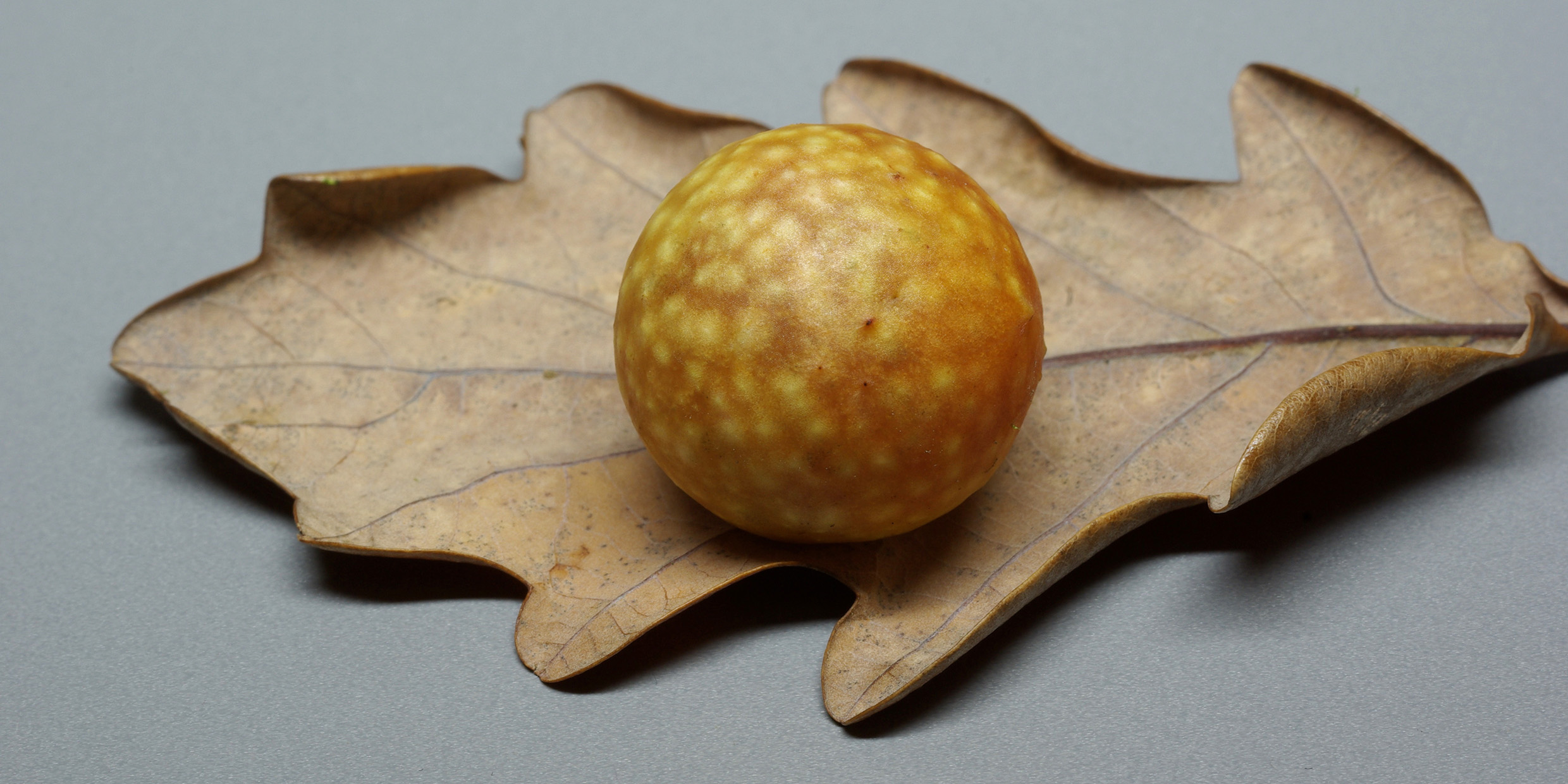Originally published 5 November 1984
The season has stripped the woods bare. The leafy veils have dropped. Now it’s all rock, bark, spike, and spine.
And galls.
On the brown leaves of oaks, at the tips of willow twigs, on the branches of spruces, on blueberry stems and the stems of goldenrods, almost anywhere an insect might alight, there are swellings, knobs, globes, prickly spines, woody flowers, and layered cones. All of these strange protuberances are examples of plant growth run amuck, at the instigation of an insect.
I found a scarlet oak the other day festooned with crisp brown spheres the size of golf balls, like a Christmas tree hung with ornaments. The spheres were galls, known commonly as oak apples, caused by a small four-winged wasp that deposits its eggs upon the leaf of the oak. When the larva hatches it eats its way into a vein of the leaf. As it eats, it is somehow instrumental in stimulating the plant to excessive growth. A proliferation of tissue grows up around the body of the feeding insect, until at last the larva is enclosed within a snug little globe packed with food, and protected (more or less) from the elements and predators. If the larva survives the incursions of other insects, it will pupate and emerge to the world as an adult. Most of the galls that decorated my oak trees were pierced with a little hole that evidenced the wasp’s escape.
Confounding identity
I remember once, years ago, struggling with my handbook to identify a shrub that looked like a willow but which had delicately scaled cones at the tips of almost every twig. No willow with cones appeared in my book. Of course, the cones were galls, in this case of a marvelous complexity, and a small gnat, no larger than the head of a match, was their maker.
Galls on goldenrods are familiar to the winter walker. The beautiful woody “flower” that is sometimes seen at the top of a goldenrod stem is the work of a midge.
And, of course, there is the goldenrod ball gall. When I was a child we looked for these cherry-sized swellings about half-way up the stems of the plant. We broke the stem at its base and just above the gall to make a kind of round-knobbed club, which we used to rap each other over the head. We called them “knockers.”
“Knockers” are the creation of a small spotted-winged fly that lays her eggs on the new stems in late spring. The egg hatches at the larva burrows into the stem. It hollows out a cozy nest and the plant proceeds to build the gall around it. The larva winters in the gall. In the spring it eats a tunnel to a point just inside the gall’s outer membrane, but does not pierce it.
The larva then retreats to the inner chamber and pupates. The adult fly has only to pop the thin curtain at the end of the tunnel to emerge from the gall.
Science still knows very little of the complex life-cycles of the gall-making insects, or how it is that they induce a particular highly specific plant to generate galls. It was once believed that the plant autonomously produced the gall in response to physical damage caused by the insect. It subsequently seemed likely that the stimulus for growth was a substance transferred to the plant by the insect.
Nature’s engineering
In recent years, the process of gall formation has been extensively studied as an example of genetic engineering in nature. It is now certain that bacteria play a role in the formation of some gall-like tumors on plants. The bacteria are carriers for sub-cellular “organisms” called plasmids, which are little more than snippets of genetic information on a circular double-stranded molecule of DNA. The bacteria enter the plant at a wound. Somehow the plasmids make their way from the bacterial cells to the cells of the plant. It is the genetic program of the plasmid that redirects the growing plant to form a gall. Some researchers hope to discover in the “genetic engineering” of galls clues to the causes of human cancer.
In general, the mechanism or mechanisms of insect gall formation are unknown. There are miracles here of molecular biology waiting to be unraveled. There are more than 1500 species of insects in North America that form galls, and possibly as many as half of our plant families serve as unwilling hosts. Many more insects prey upon the gall-makers in the place of refuge, or use the empty gall as a ready-made nest. Gall-making is certainly one of the more intriguing side-shows of evolution, and it may turn out that galls play a more significant role in the story of life than our fragmentary knowledge would indicate.
Opening a gall in winter is always a bit like entering the house that Jack built. You never know what you will find inside. Perhaps the larva of the gall-maker. Perhaps the insect that preyed upon the larva of the gall-maker. Or the insect that preyed upon the insect that preyed upon the larva of the gall-maker. Or you might find a host of innocent interlopers who have found in the gall a desirable home.
And there may be more in Jack’s house than meets the eye. Perhaps the gall-making insect is itself only the unwitting instrument of a bacteria. The bacteria may be no more than a vehicle for a “naked gene.” Insect galls, once we have solved their riddles, may have something fundamental to teach us about the miracle of life on Earth.



